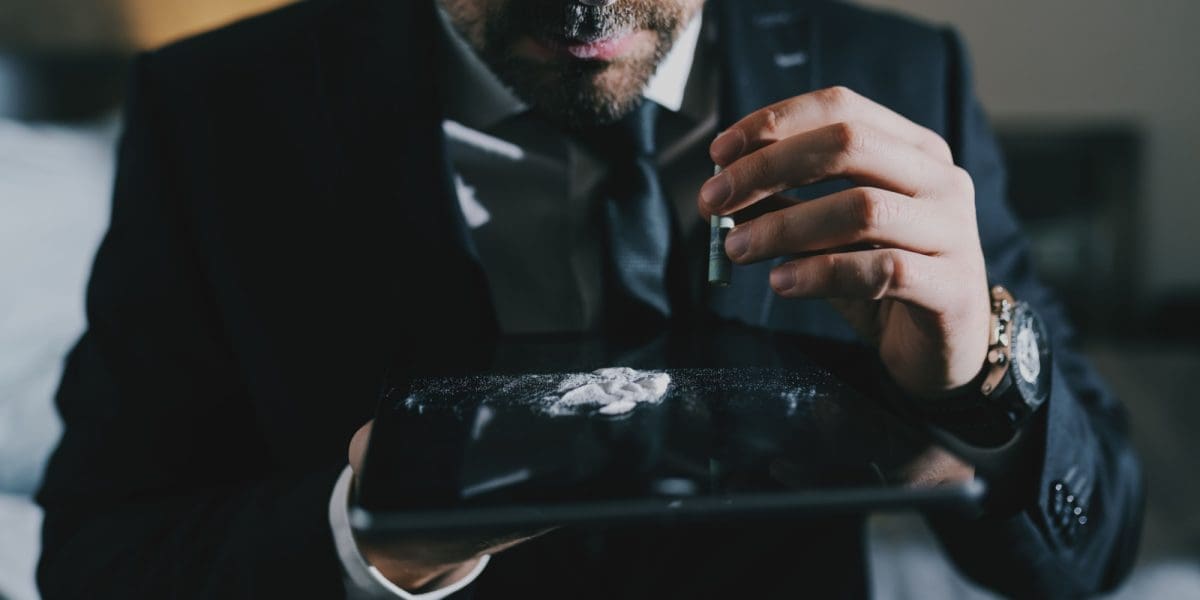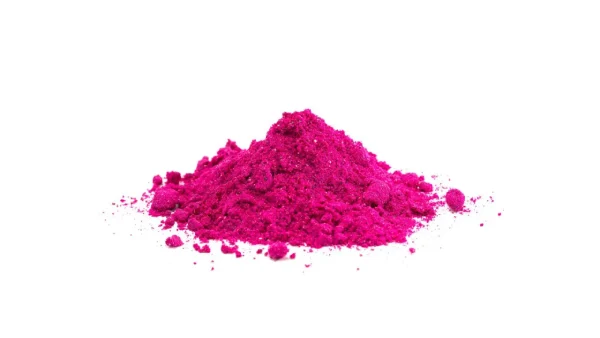Pink cocaine has risen in popularity due to its colorful appearance and party-enhancing effects. However, despite its innocent pink color, there are a variety of dangers associated with this particular drug. In this article, we’ll go over what this Colombian drug, locally referred to as “tusi” or “tuci,” really is and how it differs from cocaine.
What Is Pink Cocaine?

Despite its name, pink cocaine is not a type of cocaine. Rather, it is a synthetic phenylethylamine 2C-B consisting of pink food coloring, strawberry flavoring, ketamine, caffeine, and MDMA. This means that its effects more closely resemble those of ecstasy. For this reason, the drug is popular among teens and young adults who frequent the club scene.
The history of the drug dates back to the 1970s, when renowned organic chemist Alexander Shulgin developed it in a lab. Shulgin was a scientist who specialized in designing and testing the effects of psychedelic drugs. And during his time at Harvard, Shulgin was most famously recognized for developing methylenedioxymethamphetamine, more commonly known as MDMA or ecstasy.
The purpose behind the invention of 2C-B was to treat erectile dysfunction and enhance libido. Phenylethylamine 2C-B was sold under the name Performax or Erox until the mid-1990s. However, in 1995 the United States Drug Enforcement Agency reclassified it as a Schedule I Controlled substance. The drug was then taken off the market because it is not an acceptable form of medical use.
Pink Cocaine vs. Cocaine
The only real similarities between pink cocaine and cocaine are the name and the fact that they can both be addictive. But that’s pretty much where the parallels end. While cocaine is a refined form of the coca plant, the pink version is lab-made. In addition, cocaine as a white powder is listed as a Schedule II controlled substance in the United States because—unlike pink cocaine—it actually has medicinal purposes.
The effects of cocaine vary by how much is consumed, the route of consumption, the mix of chemicals, and who takes the drug.
A few of the immediate effects of cocaine include:
- Increased heart rate
- Dilated pupils
- Feelings of joy
- A rise in body temperature
- An energy boost
- Decreased appetite
- Increased sexual urges
Pink cocaine, on the other hand, is lab-made and considered a phenylethylamine, a classification of drugs with psychoactive and stimulant effects. Like ecstasy, the drug is regarded as a party drug and is usually found at nightclubs.
The effects of this drug can range from mild to severe, depending on how much was consumed and what else it was made with.
Side effects of pink cocaine may include:
- Hallucinations
- Euphoria
- Nausea
- Vomiting
- Agitation
- Rapid heartbeat
- High blood pressure
- Seizures
- Respiratory depression
How Do People Abuse Pink Cocaine
Pink cocaine has a high potential for abuse because it’s a drug that makes people comfortable and social. A person can use a few different methods to get high on it depending on its form. For example, one way of consumption comes in pill form, which makes it easily transportable and discreet. Another common way to use the drug is to snort it. This usually involves crushing up the pill form of the drug until it turns into a fine powder. As a powder, a person will snort it up the nose to get high quickly.
Another less popular way of consuming the drug is via injection. However, since pink cocaine is a party drug, most people choose to avoid this route of administration because it is inconvenient.
What Are the Effects of Pink Cocaine?
Many people might think pink cocaine is harmless because it is popular with the party crowd. But the truth is that it can be just as dangerous as any other addictive substance. Taking drugs, especially those that are made up of two or more toxic substances, can have long-lasting consequences. For example, even small amounts of this pink concoction laced with the wrong controlled substance can cause a person to overdose.
Furthermore, in tiny amounts, this lab-created drug can cause a rise in heartbeat. In contrast, larger quantities can cause an increased heart rate, nausea and vomiting, hallucinations, agitation, and overdose.
Below are some symptoms of pink cocaine overdose:
- Clammy skin
- Vomiting
- Shallow breathing
- Blue tinge to face, lips, and fingernails
- Respiratory distress
- Unresponsiveness
- Limp or lifeless
Treatment for Pink Cocaine Addiction
Pink cocaine can cause people to experience harmful mental and physical effects. If someone you know has an addiction to pink cocaine or any other psychedelic, you should encourage them to seek treatment as soon as possible. To achieve long-term addiction recovery, getting treatment at an accredited rehab center is usually the best place to start. The right addiction treatment programs at the right location will provide a safe environment free of judgment where your healing can begin.
Medical Detox
Detoxing from pink cocaine at an accredited rehab center will help keep you safe from any harmful side effects of withdrawal. During medical detox, you will be surrounded by medical professionals, including doctors and mental health therapists trained to recognize any complications. The staff at The Willough at Naples are here to help you on your recovery journey by acting swiftly should any problems arise.
Our medical detox program is here to help alleviate minor withdrawal side effects. This includes working to reduce drug cravings and a person’s likelihood of relapsing. Furthermore, a medical detox program keeps patients as comfortable as possible.
After detoxing from pink cocaine, the emotional and mental work of recovery can start. This means that the people who struggle with a substance use disorder can get help for an untreated or undiagnosed mental health condition.
Dual Diagnosis
For many people, addiction to drugs like pink cocaine is not a standalone issue. Instead, it comes from an underlying mental health condition. In fact, research shows that approximately half of all people with a substance use disorder also have a mental illness. Some of the most common mental health conditions that individuals live with are:
- Anxiety
- Depression
- Post-traumatic stress disorder
- Obsessive-compulsive behavior
- Phobias
- Bipolar disorder
And if you have one of these mental health disorders, traditional rehab may not be enough. Instead, you might benefit from dual diagnosis treatment to address both pink cocaine addiction and underlying mental health issues. With this level of inpatient addiction treatment, you can learn coping strategies and relapse prevention techniques to help you achieve long-term addiction recovery.
Rehab Centers for Drug Addiction

The Willough at Naples is a mental health treatment center dedicated to helping individuals facing drug addiction. We offer an assortment of treatment programs to ensure we can provide highly individualized, effective care. To get help for overcoming pink cocaine addiction, please contact us. You can call our admissions team at (239) 688-3063 or submit a confidential contact form online.
“Tusi lavada” refers to a specific form or variant of the drug tusi, which is the colloquial name for pink cocaine. The term “lavada” in Spanish translates to “washed” in English. In the context of drug terminology, this could imply that the tusi has been processed or purified in some way. However, the exact meaning can vary depending on the local context and the specifics of how the drug is prepared or marketed.
It’s important to be cautious with such terms, as they can reflect regional slang or specific methods used in the illicit drug trade, and their meanings can differ significantly. Additionally, the composition and safety of such substances are highly unpredictable, contributing to their danger.
Pink cocaine, despite its name, is not a type of cocaine. It is a synthetic drug, classified as phenylethylamine 2C-B, which includes a combination of pink food coloring, strawberry flavoring, ketamine, caffeine, and MDMA. This composition means that its effects more closely resemble those of ecstasy, rather than traditional cocaine. Originally developed in the 1970s by chemist Alexander Shulgin, it was intended for treating erectile dysfunction and enhancing libido, and was sold under names like Performax or Erox until its reclassification as a Schedule I Controlled substance in the United States in 1995. Pink cocaine is popular among teens and young adults in the club scene, and its use can lead to a range of side effects, including hallucinations, euphoria, nausea, rapid heartbeat, and in severe cases, seizures and respiratory depression.

Pink Cocaine: The New Psychedelic Party Drug
“Tusi” or “tuci” is a local term used to refer to pink cocaine, particularly in Colombia. It is a synthetic drug known scientifically as 2C-B. Unlike traditional cocaine, tusi is not derived from the coca plant but is instead a laboratory-made substance. This drug is a combination of pink food coloring, strawberry flavoring, ketamine, caffeine, and MDMA, and its effects are more akin to ecstasy rather than cocaine. Developed in the 1970s by chemist Alexander Shulgin, tusi was initially created for treating erectile dysfunction and boosting libido. However, it was later classified as a Schedule I Controlled substance and taken off the market due to its high potential for abuse and lack of accepted medical use. In the club scene, especially among younger adults, tusi is known for its party-enhancing effects.
